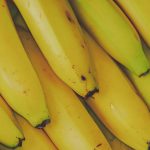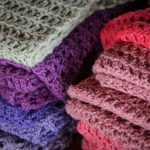You’ll find abaca fiber highly absorbent due to its hollow, tubular structure that creates natural channels for moisture and contaminant trapping. Its rough texture and high porosity let it soak up liquids quickly while staying durable from strong cellulose and lignin. Compared to cotton or jute, abaca filters more effectively and resists microbial growth. Plus, it works great in both water and air filtration systems. Keep exploring to uncover its environmental benefits and future potential.
Table of Contents
Key Takeaways
- Abaca fiber’s hollow, tubular structure creates natural channels that enhance water absorbency and moisture trapping.
- Its rough texture and high porosity enable quick and effective liquid absorption.
- Compared to cotton, jute, and coir, abaca offers superior filtration by maintaining strength and resisting microbial growth.
- Abaca efficiently traps sediments, dust, pollen, and fine particles in water and air filtration systems.
- The fiber’s natural durability and moisture resistance extend filter lifespan in various filtration applications.
Structural Properties of Abaca Fiber That Enhance Absorbency
Although you mightn’t realize it, the unique structure of abaca fiber plays an essential role in its impressive absorbency.
The unique structure of abaca fiber is key to its remarkable ability to absorb moisture.
When you examine the fibers closely, you’ll notice their hollow, tubular shape, which creates natural channels for water to flow through and be retained. These channels increase the surface area, allowing the fiber to trap moisture effectively.
You’ll also find that abaca fibers have a rough texture and a high degree of porosity, both of which contribute to absorbing liquids quickly.
Plus, the strong lignin and cellulose composition gives the fibers durability, so they maintain their absorbent qualities even after repeated use.
Understanding these structural traits helps you appreciate why abaca fiber stands out in applications requiring efficient moisture absorption and filtration.
Comparing Abaca Fiber to Other Natural Fibers in Filtration
When you compare abaca fiber to other natural fibers like cotton, jute, or coir, its filtration capabilities stand out due to its unique combination of strength and porosity.
Unlike cotton, which excels in softness but lacks durability, abaca offers a tougher structure that handles repeated use without breaking down.
Jute provides decent filtration but tends to retain moisture longer, risking microbial growth—abaca’s natural resistance reduces this concern.
Coir, while coarse, doesn’t filter fine particles as effectively as abaca does.
You’ll find that abaca’s long, hollow fibers create efficient channels for trapping contaminants while allowing fluid flow.
This balance makes it superior in filtration where both absorbency and mechanical strength matter, giving you a reliable natural fiber option for demanding filtration tasks.
Applications of Abaca Fiber in Water and Air Filtration Systems
Building on abaca fiber’s standout filtration qualities compared to other natural fibers, you’ll find it increasingly valuable in both water and air filtration systems.
In water filtration, abaca fiber effectively traps sediments and contaminants due to its high absorbency and durability. You can use it in filter bags and cartridges to improve water clarity in industrial and household settings.
For air filtration, abaca’s porous structure captures dust, pollen, and other airborne particles, making it ideal for HVAC filters and pollution control devices. Its natural resistance to moisture and microbial growth also guarantees longer filter life.
Environmental Benefits of Using Abaca Fiber for Filtration
Since abaca fiber is biodegradable and sourced from renewable plants, it offers significant environmental benefits for filtration systems. When you choose abaca fiber, you’re reducing reliance on synthetic materials that persist in landfills and pollute ecosystems.
Its natural decomposition means filters won’t contribute to long-term waste after disposal. Plus, abaca cultivation requires fewer chemicals and less water than many synthetic fiber alternatives, lowering your environmental footprint.
Using abaca fiber also supports sustainable farming communities, promoting eco-friendly economic growth. Its renewable nature guarantees a steady supply without exhausting resources, letting you maintain effective filtration while caring for the planet.
Challenges and Future Prospects for Abaca Fiber Filtration Technology
Although abaca fiber offers promising filtration benefits, it still faces several challenges that could limit its widespread adoption. You’ll encounter issues like inconsistent fiber quality, high production costs, and limited scalability. However, ongoing research aims to overcome these hurdles by enhancing fiber treatment and manufacturing techniques. As you look ahead, innovative applications and eco-friendly processing could boost abaca’s market potential.
| Challenge | Impact | Future Outlook |
|---|---|---|
| Quality Variation | Reduces filtration efficacy | Improved fiber standardization |
| Production Costs | Limits commercial viability | Cost-effective processing |
| Scalability | Restricts mass production | Advanced manufacturing tech |
| Environmental Impact | Waste management concerns | Sustainable disposal methods |
Frequently Asked Questions
How Is Abaca Fiber Harvested and Processed Before Use?
You harvest abaca fiber by cutting its stalks, then stripping the outer layers to extract fibers. Afterward, you dry and clean them before using, ensuring quality for various applications like textiles or ropes.
What Is the Historical Origin of Abaca Fiber Usage?
Think of abaca fiber as nature’s ancient thread weaving through history. You’ll find its origins in the Philippines, where locals have used it for centuries to craft ropes, textiles, and everyday essentials, showcasing its enduring value.
Can Abaca Fiber Be Blended With Synthetic Fibers for Filtration?
You can blend abaca fiber with synthetic fibers for filtration. Combining them enhances strength and durability while maintaining natural absorbency. This mix improves filtration efficiency and longevity, making your filters both effective and sustainable.
What Are the Cost Implications of Using Abaca Fiber Filters?
You’ll find abaca fiber filters may cost more upfront due to sourcing and processing, but they offer durability and biodegradability that can save you money long-term. Their eco-friendly nature might also appeal to your green initiatives.
How Does Humidity Affect the Performance of Abaca Fiber?
Humidity’s like a sneaky rain soaking your abaca fiber, making it swell and weaken. You’ll notice its filtration slows and might clog faster, so keep moisture in check to maintain peak performance and durability.
- How Absorbent Is Abaca Fiber? a Look at Its Filtration Capabilities - June 25, 2025
- Abaca as a Biocomposite: the Science Behind Its Strength and Durability - June 25, 2025
- Understanding Abaca Fiber Length and Its Impact on Quality - June 25, 2025







